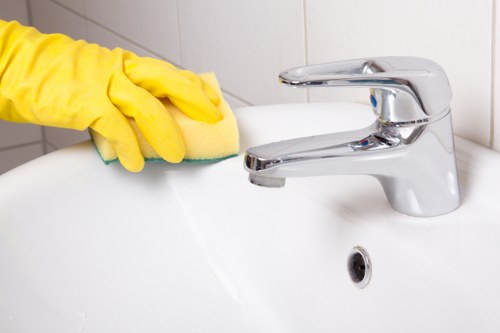Spot Cleaner Whetstone: Your Ultimate Guide to Keeping Tools Sharp and Clean
Introduction

Keeping your tools sharp and clean is essential for both safety and efficiency. A Spot Cleaner Whetstone is an invaluable tool in achieving this goal. Whether you’re a professional craftsman or a DIY enthusiast, understanding how to use and maintain a whetstone can significantly prolong the life of your tools.
In this guide, we will explore everything you need to know about spot cleaner whetstones, from their benefits and usage techniques to tips on selecting the right one for your needs.
By the end of this article, you’ll have a comprehensive understanding of how a spot cleaner whetstone can enhance your tool maintenance routine.
What is a Spot Cleaner Whetstone?

A Spot Cleaner Whetstone is a specialized sharpening stone designed to clean and sharpen the edges of various tools. Unlike traditional whetstones that are primarily used for sharpening, spot cleaner whetstones incorporate cleaning agents that help remove rust, grime, and other debris from tool surfaces.
This dual functionality makes them a convenient option for maintaining the performance and longevity of your tools. Whether you’re dealing with kitchen knives, woodworking tools, or garden equipment, a spot cleaner whetstone can be an essential addition to your maintenance toolkit.
Understanding the specific features of a spot cleaner whetstone can help you choose the right one for your particular needs.
Benefits of Using a Spot Cleaner Whetstone

Enhanced Tool Performance
Using a spot cleaner whetstone ensures that your tools remain sharp and efficient. A sharp edge reduces the effort required for cutting, slicing, or carving, making your tasks easier and more precise.
Cost-Effective Maintenance
By regularly using a spot cleaner whetstone, you can extend the lifespan of your tools, delaying the need for replacements. This not only saves money but also reduces waste, contributing to a more sustainable approach to tool maintenance.
Easy to Use
Spot cleaner whetstones are designed for user-friendly operation. With clear instructions and manageable sizes, both beginners and experienced users can effectively maintain their tools without the need for professional assistance.
How to Choose the Right Spot Cleaner Whetstone

Grit Sizes Explained
The grit size of a whetstone indicates its coarseness. Fine grits (1000-3000) are ideal for sharpening and honing, while coarse grits (400-800) are better suited for repairing damaged edges. Selecting the appropriate grit size depends on the condition of your tools and the level of sharpness you desire.
Material Considerations
Spot cleaner whetstones are made from various materials, including aluminum oxide, silicon carbide, and natural stones. Each material offers different sharpening properties, so it’s essential to choose one that matches the type of tools you use most frequently.
Size and Shape
The size and shape of the whetstone affect its usability and storage. Larger stones provide more surface area for sharpening, but smaller ones are easier to handle and store. Consider your workspace and how often you’ll be using the whetstone when deciding on the size and shape.
Step-by-Step Guide to Using a Spot Cleaner Whetstone

Preparing the Whetstone
Before using your spot cleaner whetstone, soak it in water for about 10-15 minutes. This saturation helps in the sharpening process by providing the necessary lubrication and preventing the stone from clogging with metal particles.
Sharpening Techniques
Start by holding the tool at the correct angle against the whetstone. Using consistent pressure, slide the tool across the stone in smooth, even strokes. Repeat this process until you achieve the desired sharpness, alternating sides to maintain balance.
Maintenance and Care
After use, rinse the whetstone thoroughly to remove any debris and dry it completely to prevent rusting. Regular maintenance ensures the longevity of both the whetstone and your tools, maintaining optimal performance over time.
Common Mistakes to Avoid

Incorrect Angle
One of the most common mistakes when using a whetstone is sharpening at the wrong angle. Maintaining a consistent angle is crucial for achieving an even edge and preventing damage to the tool.
Over-Sharpening
Applying too much pressure or sharpening too frequently can wear down the edge of your tool, making it less effective. It’s important to strike a balance between maintaining sharpness and preserving the tool’s integrity.
Neglecting Maintenance
Failing to clean and store your whetstone properly can lead to clogging and reduced effectiveness. Regular maintenance practices are essential for ensuring the whetstone remains in good condition for future use.
Comparing Spot Cleaner Whetstones with Other Sharpening Tools

Spot Cleaner vs. Electric Sharpeners
Electric sharpeners offer speed and convenience, but they can be less precise than manual whetstones. A spot cleaner whetstone provides greater control over the sharpening process, allowing for a more customized edge.
Spot Cleaner vs. Manual Sharpeners
While manual sharpeners are cost-effective and straightforward, spot cleaner whetstones offer superior versatility and effectiveness in cleaning and sharpening. They are particularly beneficial for tools that require precise maintenance.
Local Relevance: Spot Cleaner Whetstone in Whetstone Area

The Whetstone area is home to a variety of hardware stores and tool maintenance services that cater to both amateur and professional tool users. Whether you’re located in the heart of Whetstone or in one of its surrounding neighborhoods, finding a reliable spot cleaner whetstone is straightforward.
Nearby Areas
- Cricklewood: Just north of Whetstone, Cricklewood offers a range of specialty tool shops.
- Colindale: West of Whetstone, Colindale is known for its extensive hardware suppliers.
- Mill Hill: Northeast, Mill Hill provides several local stores that stock high-quality whetstones.
- West Hendon: Adjacent to Whetstone, West Hendon has numerous tool maintenance services.
- Hendon Southeast of Whetstone, Hendon features a variety of markets selling sharpening tools.
- Burnt Oak: Southwest, Burnt Oak is home to several DIY centers that carry spot cleaner whetstones.
- Temple Fortune: Northwest, Temple Fortune offers boutique shops specializing in tool care.
- Colindale Northwest, Colindale boasts a range of options for purchasing whetstones.
- Finchley Road: South of Whetstone, Finchley Road is a hub for both traditional and modern tool retailers.
- Kingsbury: Further south, Kingsbury provides additional outlets for tool sharpening needs.
- Location 11: [Description]
- Location 12: [Description]
- Location 13: [Description]
- Location 14: [Description]
- Location 15: [Description]
Frequently Asked Questions
1. How often should I use a spot cleaner whetstone on my tools?
It depends on how frequently you use your tools. For regular use, sharpening every few weeks is recommended. Less frequent use may require sharpening every few months.
2. Can I use a spot cleaner whetstone on all types of tools?
Spot cleaner whetstones are versatile and can be used on a variety of tools, including kitchen knives, woodworking tools, and garden equipment. However, always check the manufacturer's recommendations for your specific tool.
3. Do I need to soak the whetstone before use?
Yes, soaking the whetstone in water for about 10-15 minutes before use is essential. This helps in providing the necessary lubrication and prevents the stone from clogging with metal particles.
4. What is the best way to maintain my spot cleaner whetstone?
After each use, rinse the whetstone thoroughly to remove any debris and dry it completely. Regularly flatten the stone to maintain an even surface and prevent uneven sharpening.
5. Can a spot cleaner whetstone replace other sharpening tools?
While a spot cleaner whetstone is highly effective for many sharpening tasks, certain tools or specific sharpening needs might benefit from specialized equipment. Consider your specific requirements when deciding whether to use a whetstone exclusively.